Decomposition of "frequency response curve" : "frequency" refers to "frequency", which is the same as "tone" in sound performance; loud
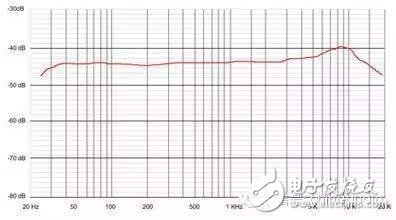
Speaker and frequency response curve
Is the frequency response curve of sound system or speaker product required to be straight? Many people argue on this issue, and the focus of the debate is often: what sounds good is not necessarily straight, and what is straight is not necessarily good.
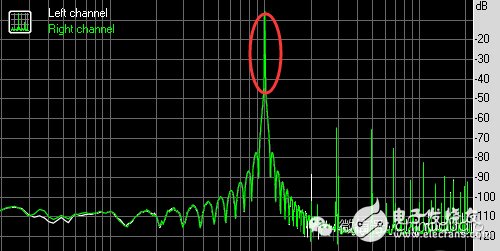
For example, the curve of a speaker near 80 Hertz is more prominent, then it means that the speaker is too strong for the frequency band near 80 Hertz, if you play music, then the bass sound will feel heavy. Or the curve of a speaker has a depression near 1000 Hz, which means that the speaker is weak for the frequency band near 1000 Hz, the output sound pressure of the input signal near 1000 Hz is reduced, and the sound is not the original.
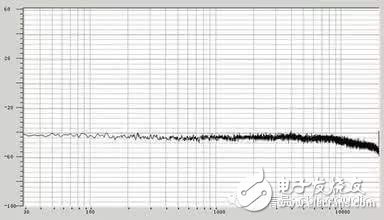
How flat the frequency response curve is, in fact, tells you the gain difference of the speaker or sound system for different frequency bands of sound signals. The straighter the curve, the closer the gain is to the same for each frequency band of the speaker or sound system. However, the speaker or system is not equal to the gain of each frequency segment of the input signal. Why is that? Because the gain amount is the same, it only expresses the same amount of sound in each frequency band of the input signal, for example, the gain amount of each frequency in a certain system is 30 dB, you emit a 1000 Hz sound, the sound pressure level is 80 dB, and the sound pressure level of the 1000 Hz sound emitted by the speaker is 80+30=110 dB. The sound pressure level of your 2000 Hz sound is 60 dB, so the sound pressure level of 2000 Hz sound coming out of the speaker is 90 dB. When not amplified by the system, the sound pressure level of your 1000 Hz sound is 20 decibels different from that of 2000 Hz sound. Then through this system with the same gain for each frequency band, the sound pressure level of the 1000 Hz sound and the 2000 Hz sound emitted by the speaker is also 20 dB different, and the formation remains unchanged, hehe. However, if you have a system that has too much gain for 1000 Hz (highlighted on the curve), not 30 dB but 40 dB, and too little gain for 2000 Hz (dented on the curve), not 30 dB but 20 dB. So the 1000Hz sound that you originally emitted at 80 decibels of sound pressure level, when it passes through the system, it emits a sound of 120 decibels, and the sound that you originally emitted at 60 decibels of 2000 Hertz, when it passes through the system, it emits a sound of 80 decibels. The difference between the sound pressure level of 1000 Hz and 2000 Hz before the system is 20 dB, and the difference between the sound pressure level of 1000 Hz and 2000 Hz after the system becomes 40 dB, which is not the original difference, and the formation changes, which is also a distortion. Therefore, whether the frequency response curve is flat only represents whether a speaker or a system has roughly the same volume performance for sound in various frequency bands, and has nothing to do with sound quality.
As for whether it is good or not, first of all, your system should have roughly the same gain for the input signal in each frequency band (that is, the curve should be as flat as possible), so as to restore the ratio of the sound size of each frequency band in the original signal after amplification, at least the strong is strong, and the weak should not be strong. It can truly reflect the strength of the voice, which is a good foundation. If you want to sound good, it is more important to do something about the sound quality. Sound quality rotten, no matter how good the system is also showing bad sound, do not believe you get a cow B speaker, with dozens of MP3 input to the mixing desk, and the mixing desk input gain open to the end, play MP3 format music downloaded from the Internet, listen to the sound try. And sound quality, which is something internal, is not just a matter of flat curves. The curve is flat and straight, which only expresses the system's restoration of the volume. Then the restoration of sound quality is estimated to be an idealized thing. For example, when someone records a piano with a DPA microphone on a Steinway piano, it is almost impossible to completely restore the texture through the sound. It's like when you listen to someone playing the violin next to you, and you listen to the same person playing the violin next to the speaker, even if you use the best stereo, it will always sound different. This involves the problem of sound quality reduction and sound field reduction, and these reduction degrees are not to say who can express them with curves. And the level of sound quality, it has a great relationship with your materials, your craft, the designer's technology and artistic accomplishment. Can a master's work of art carved from white jade look the same as a street craftsman's work cast from plaster?
Conversely, the curve is flat, and the curve is flat, which means that the system or equipment has a high degree of restoration of the volume strength of each frequency band in the input signal. As a sound, this is only a basic indicator, but it is also a very important indicator. For example, a sound system with a good volume restoration, the input sound source signal itself is high, medium and low, and so on, the volume ratio of various parts is harmonious (such as the music master recorded by the recording master, like what fever day disc and so on). Through the speaker, it naturally feels harmonious. If the input signal is a song by a screaming, karaoke grade singer, the original singing is not harmonious, from the high precision sound system it is not harmonious. However, a system with poor restoration, such as the frequency response curve protrudes at low frequencies and is a little depressed at middle and high frequencies, may strengthen the bass that is not originally strong, weaken the trumpet that should have been strong, and play the works with harmonious volume of the original parts may become disharmonious. However, if you happen to have the player play the strong bass tone weak, or the weak trumpet tone blowing strong, negative negative positive, play the original volume of disharmonious works, with this low reduction of the speaker may be more harmonious than the higher reduction of the speaker.
In addition, for audio products, in fact, not only speakers, amplifiers, mixers and other peripheral equipment, there are frequency response curves. According to industry standards, these devices are required to have a flat frequency response curve without adjustment, and the purpose is to require these devices to first maintain a faithful attitude toward the volume strength in the characteristics of the signal as much as possible. If you use an equalizer, without adjustment, and the fads are all flat, the frequency response curve is higher at 80 Hertz and lower at 1000 Hertz, would you still want it?
Earphones and frequency response curves
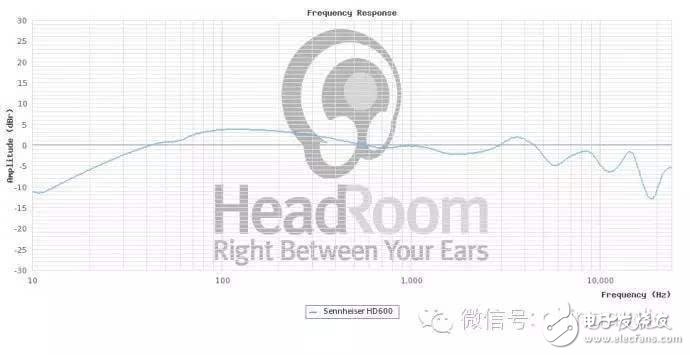
It is not easy to see whether the headphones are good or bad by the frequency response curve.
The center of the earphone film is low frequency and the edge is high frequency.
The low-frequency end of the frequency response curve is a downward trend, in order to obtain more low-frequency kinetic energy, so the spherical design of the center of the headset is to increase its surface area and obtain the bass. The frequency response curve of the mid-frequency of the headset is relatively flat, because of the spiral lines on the surface of the sound film.
There is a big sawtooth on the frequency response curve of the high frequency end of the earphone, because there is a soft ring on the edge of the sound film to increase the elasticity of the sound film, so the resonance frequency of the soft material decreases, after the soft ring to the bonding edge material becomes hard, the resonance frequency rises, and a big sawtooth is formed. Every headset has its share of inevitability.
There are many small serrated teeth on the frequency response curve of the high frequency end of the headset, and there are burrs glued to the edge of the sound film bracket and the sound film. Related to the headphone manufacturing process, if the bracket and the sound film are integrated, there will be no problem.
Knowing the above situation, we pay attention to his frequency response curve when choosing headphones, the low-end gain should be large, the high-frequency end should be less small sawtooth, and the mid-frequency should be flat.
Sound quality and frequency response curves
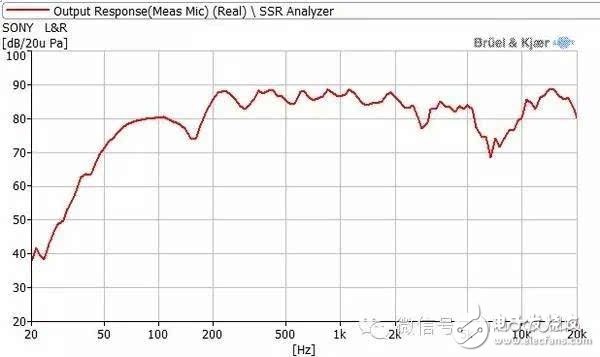
There are so many factors that affect sound quality.
First, let's look at sound quality. Sound quality refers to the closeness of the actual sound wave to the original waveform, that is, the closer the actual sound wave played back is to the waveform saved in the original audio file, the better the sound quality. Suppose there is an audio file A.AV, and there is an ideal recording device, which can record the sound in the air without loss and save it as B.AV, then the closer the A.AV and B.AV (from the time domain and frequency domain), the better (more please read chinaaudio.net main site original: What is sound quality).
For a system (equipment), the amplitude-frequency response and phase-frequency response together constitute the response of the entire system, and the general frequency response curve only refers to the amplitude-frequency response.
What are the processes that affect the sound quality of an audio file from a mobile phone to being heard? The general process is like this: audio file - "operating system Mixer -" operating system DSP algorithm (sound, resampling, possibly using DSP chip) - "DAC -" amplifier - "headphones/speakers -" Air - "human ear.
Since air and the human ear cannot be controlled, only the sound coming out of the speaker/headset is studied. Almost every step before this affects the sound quality.
The first is the operating system's mixer, which is responsible for mixing the various programs that play sound in the system together, so that all programs can sound at the same time without one program monopolizing the output device and other programs can not sound. The expression in the code is to do addition, adding up the output of various programs. That's fine if only one app is playing music, but the phone also has to deal with ringtones and reminders. How does addition work? It depends on the algorithm. If it is a fixed-point addition, to ensure that the added value does not overflow, the two data are moved to the right before being added. Floating-point is more complicated, and because most of the existing audio files are in 16-bit fixed-point format, they also have to go through the conversion between fixed-point "-" floating-point, which also loses accuracy. In short, the program sacrifices precision for dynamic range. And what if only one program is output? Don't forget to adjust the volume of the thing, that is to multiply each point on the waveform by a gain value (gain), the multiplication process will also have a loss of accuracy. Overall, loss of accuracy in this step of the mixer is unavoidable. However, in addition to the input and output process on the mobile phone, the middle is floating point arithmetic, and the loss of accuracy is generally not more than -90dB, which is generally inaudible.
Then there's the DSP algorithm part. This part of the sound effect (bass enhancement, increased sense of space, etc.) is subjective and does not belong to the category of "sound quality", so it is not discussed. Assuming all sound effects are turned off, the only thing left is resampling. For mobile phones, resampling exists because a DSP chip tends to support only one output sampling rate, or a DAC only supports one input sampling rate, and in most cases this sampling rate is 48kHz. This is because if you want to support different sampling rates, especially sampling rates such as 44.1kHz and 48kHz such a non-integer relationship, you need to equip crystal oscillators with different frequencies. For various reasons, it is easier for a crystal oscillator to generate a clock frequency of 48kHz. However, for various historical reasons, most of the current music is 44.1kHz, so it undergoes a 44.1KHz-48khz resampling. Non-integer multiple resampling is a great loss of accuracy, do not think that the sampling rate becomes higher the sound quality will be better. Direct output without resampling is the best sound quality. The effect of resampling on sound quality depends on the resampling algorithm, and poor algorithms can lead to serious distortion.
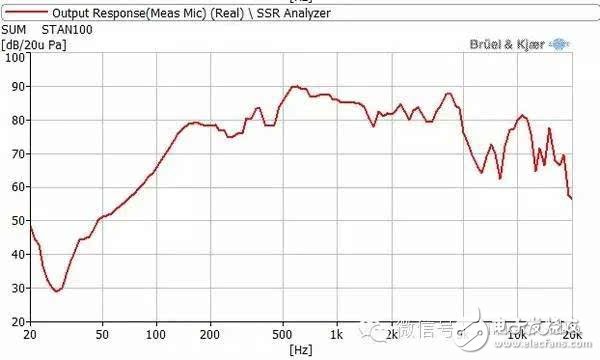
Next comes DAC, or digital-to-analog converters. This is a module that has a significant impact on sound quality. The frequency response of a DAC is also easy to flatten, but there are many other parameters that need to be referenced to measure the sound quality of a DAC. The quality of DAC can basically depend on the manufacturer and model of the chip itself, so there is nothing to say. Good devices use higher-end Dacs.
And then there's the amplifier. Relatively speaking, this part is relatively easy to achieve a flat amplitude-frequency curve. But phase frequency is not necessarily. (The frequency response of the amplifier is already very easy to be flat)
Finally, headphones/speakers. In general, their amplitude-frequency curves are difficult to flatter, largely because the height of the frequency that the sound unit can emit is inversely proportional to its size. So don't expect earbuds to deliver effective low frequencies at all. This is the main reason why headsets generally have better sound quality than earbuds or earbuds. For speakers, binary frequency, three-frequency, and even multi-frequency division are often used, that is, multiple sound units are responsible for different frequency bands, which will also have problems such as filtering and processing frequency band connections. From the perspective of the entire audio stream, the headset/speaker is the part that has the biggest impact on the sound quality. Your phone is full of lossless music, the phone supports 44.1kHz direct output, the DAC is the best chip, the amplifier is almost distortion free, and you end up with a $50 pair of street stall headphones that sound like crap.
In summary:
1. Can frequency response curves reflect sound quality?
I can. In theory, the flatter the frequency response curve, the better, and the closer the system response is to straight-through. But just looking at a frequency response curve is very incomplete.
2. To what extent does the frequency response curve of the amplifier determine the sound quality?
Very few.
3. For mobile phones, what are the parameters that affect sound quality worth paying attention to?
Mixers and resampling algorithms are the same or similar from phone to phone.
The amplifier is more important, and the amplifier of the mobile phone can achieve a good system response, so there is little difference between everyone.
DAC, more important, depending on the chip model.
The decisive part is in your playback device, and nothing works better than a good headset or speaker.
Other commonly used parameters to evaluate sound quality are distortion degree, signal-to-noise ratio, etc.
Timbre and frequency response curves

From the "frequency" analysis: we will find in different Musical Instruments the same "tone" (frequency) of the sound, its "timbre" is different, so what factors determine the musical instrument timbre?
Answer: Because the harmonic components contained in the "tone" (frequency) are different.
We know that sound is produced by vibration. And for an object to vibrate back and forth, it is almost impossible to always vibrate according to a certain period. That is to say, when an object sounds, it will also emit many waves of different frequencies (harmonics). These many waves of different frequencies can not be distinguished separately due to the small phase difference (the time between the waves is very short), so these waves will be mixed together to give people a whole sound feeling, and this feeling is called timbre.
Some people doubt that although the "tone" in the actual instrument is the same, it is difficult to ensure that the sound pressure/loudness of the contrast can be achieved when blowing, pulling, and playing, so the feeling of the sound we hear will of course be different.
To rule out this idea, an experiment can be done: Theoretically, when two sounds with the same sound pressure level are superimposed, the total sound pressure level in the reference axis will increase by 3dB. We take two speaker units with the same sound pressure level at the same frequency and superimpose the sound, and then compare it with a single +3dB unit. The end result: sounds with the same sound pressure level still feel very different. (At this time, only when the following conditions are met: that is, the harmonic components of the superimposed sound pressure are the same as the harmonic components of a single +3dB speaker, the timbral feeling will not be easy to distinguish)
Since every sound in a musical instrument contains sound waves of many frequencies, how do we distinguish tones (frequencies)?
A: The frequency with the greatest relative quantity of a certain frequency in a sound determines the tone of the sound. For example, if a sound contains 3 units of 444Hz (la sound) and 1 unit of 222Hz frequency, then we hear the la sound. With 3 units of 444Hz and 1 unit of 333Hz, we still sound la, but the timbre feels different.
In explaining the relationship between "frequency", "sound" and "sound", and then explain some problems that should be paid attention to in the test curve of the loudspeaker development process (in this case, skip the change of the low frequency resonance and the high frequency upper limit of the timbre, and focus on the problem of the sound pressure level difference in the middle frequency band).
1. In many companies, the average sensitivity column of the loudspeaker specifications will be marked as follows, such as: 82dB±3dB. Therefore, many people think that the development task has been completed when copying the speaker, within the allowable range of 82dB, and the result is that the sample is judged NG after listening to the sound.
Because the relationship between the dB SPL values is logarithmic, it shows that there is a relatively wide range of sound pressure (strength) in 1 dB. The human ear can distinguish the difference of 1dB sound pressure level in the more sensitive frequency band. Therefore, in the development process, the dB SPL of the middle frequency band should be controlled within ±0.5dB as far as possible.
2. Some engineers have made the difference of SPL values within 1dB, or even closer. At this point, the timbre still feels different. Consider the test environment and the way the curve behaves. When the test environment is poor, the environment will interfere with the test microphone, and there will be a large error on several curves of the same speaker test, so it is necessary to repeat the test, eliminate the influence factor of the environment, and then analyze.
The test environment is good, such as in the standard no noise chamber, no human error, and the curve is controlled within 1dB, then it is necessary to consider the number of different points and smoothing mode of the curve. The performance of different points and smoothing modes on the details of the frequency response curve is very different. In the test frequency range, the number of response values of the instrument for different frequency points is selected, the more points, the more accurate the test. The smooth way the instrument samples the amplitude of the frequency response in the frequency range, such as 1/6oct, 1/12oct, 1/24oct, 1/48oct, etc., the larger the denominator, the more accurate the data). So, if you want to understand these details of the change in the frequency response curve to pay the price: a good standard test environment.
It should be noted that in the use of multiple points, do not use the smoothing function of the curve comparison, in addition to environmental factors, there will be some problems. For example, as mentioned in the above harmonics: because the object vibrates back and forth, it is almost impossible to always vibrate in accordance with the specified period. At this time, there will be a phenomenon of sound pressure level drift at some frequency points. At this time, according to the function of the instrument, the frequency range of the original test can be segmented, more point scanning can be taken, and the response trend of its frequency band can be understood in multiple directions.
3. Eliminate the test error factor, compare the harmonic components of speakers with very close frequency response curves, and find out the direction of the next improvement. The general instrument for testing harmonic distortion can easily compare harmonic components.
Conclusion:
When the frequency response curve of the loudspeaker is the same, its timbre is determined by its harmonic components. When the frequency response curve of the speaker is the same, if the timbre is different, the harmonic curve of the speaker needs to be compared. During the test process, it is necessary to pay full attention to the impact of the operator, test instrument, use method, test environment and control tool on the test results, and use more points and less smoothing methods to compare as much as possible
免责声明: 本文章转自其它平台,并不代表本站观点及立场。若有侵权或异议,请联系我们删除。谢谢! Disclaimer: This article is reproduced from other platforms and does not represent the views or positions of this website. If there is any infringement or objection, please contact us to delete it. thank you! |


